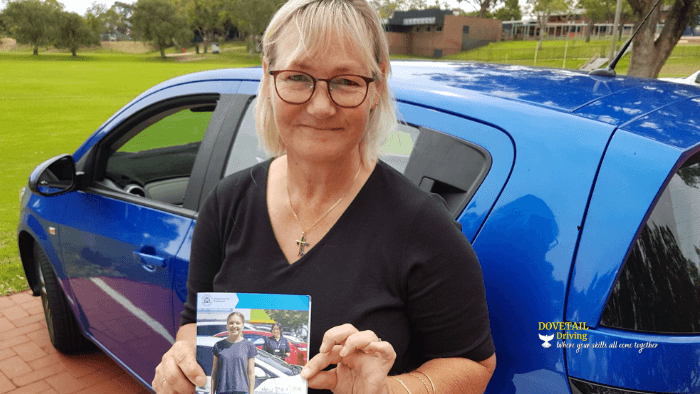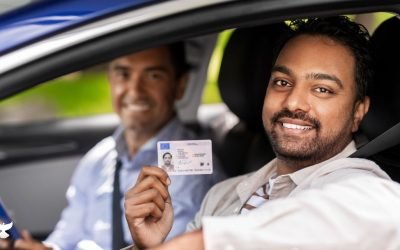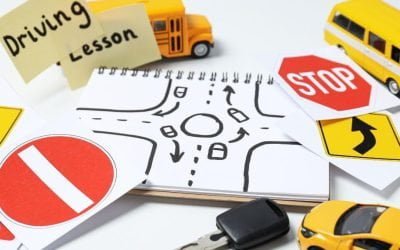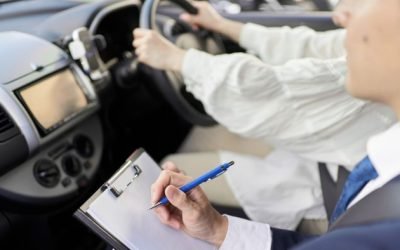Is your car safe for driving lesson? Find the top safety features, recall status, and crash test ratings. Safety in Australia means having functional airbags, seatbelts, and brakes, along with strong ANCAP safety ratings. Use your car’s Vehicle Identification Number (VIN) to check for any active recalls through the Australian Government’s recall website. The following guide will show you how to test and monitor your car’s safety in real-world conditions.
- Key Takeaways
- Why Car Safety Matters
- Your Pre-Drive Safety Checklist
- Safety Beyond Your Car
- The Instructor’s Car Advantage
- After You Pass Your PDA
- Building Lifelong Safety Habits
- Conclusion
- Frequently Asked Questions
- How can I quickly check if my car is safe before driving?
- Why should I care about car safety every time I drive?
- What should I include in my pre-drive safety checklist?
- Is my car safer if I use an instructor’s vehicle?
- What should I do after passing my practical driving assessment (PDA)?
- How can I build lifelong safe driving habits?
- Are there local safety rules in Perth I should know about?
Key Takeaways
- Knowing about advanced car safety features and high safety ratings can help you make decisions that minimise your risk of serious injuries on Australian roads.
- Checking your tires, brakes, lights, and fluid levels regularly will help keep your car trustworthy and potentially save you from a breakdown or an accident.]
- Keeping your windshield, mirrors, and wipers in tip-top shape ensures a clear view, which is crucial for driving safely in any weather in Australia.
- By consistently using seat belts, keeping your cabin clutter-free, and ensuring all controls work correctly, you can reduce distractions and increase your safety on the road.
- Defensive driving, keeping current with local traffic laws, and being aware of your surroundings prevent you from falling into typical pitfalls, keeping you and those with you behind the wheel safe.
- Creating lifelong safety habits–from regular car inspections to spreading safety awareness–will keep you driving in America with confidence and care.
Why Car Safety Matters
Car safety is more than just the rules. It’s about how much it really matters to you and those you care about. In cities and suburbs throughout Western Australia, your car is more than just a means of transportation. It’s your zone, and occasionally your people’s zone as well. Whether it’s your everyday vehicle or the car for driving test, making sure it’s safe and roadworthy is essential. Every journey — even the briefest — presents dangers that you can control when you understand what makes a car safe.
| Safety Feature | What It Does | Impact on You |
|---|---|---|
| Airbags | Cushions you in a crash | Lowers the chance of head and chest injury |
| Anti-lock Brakes (ABS) | Stops wheels from locking up | Lets you keep control when braking hard |
| Electronic Stability | Helps keep your car on the right path | Stops skids and rollovers |
| Crumple Zones | Absorbs crash force, protects people inside | Cuts down on injury in a collision |
| Lane Assist Systems | Warns if you drift out of your lane | Helps keep your focus, stops accidents |
| Blind Spot Monitors | Alerts to cars you can’t see | Cuts the risk of lane change crashes |
| Rearview Cameras | Let you see behind your car | Prevents back-over accidents |
| Automatic Braking | Stops the car if there’s danger ahead | Can stop a crash before it starts |
Safety ratings provide a quick means to check how safe a car will keep you. These ratings come from organisations such as the Australasian New Car Assessment Program (ANCAP) and the Insurance Institute for Highway Safety (IIHS). They conduct crash tests and use real-world data to score cars on a scale, so you can see how they stack up before you purchase. You’re not insured, but if you choose from the high safety score cars, you reduce your risk of serious injury or death in a crash. For instance, side-impact winners tend to keep drivers safer at intersections, a prime location for gnarly crashes.
Advanced safety systems these days do a lot more than protect you after a collision. They try to keep you out of trouble to begin with. Things like forward-collision warning, lane-keeping assist, and pedestrian detection leverage sensors and software to detect danger before you do. These features are no longer reserved to new or expensive cars– many used cars from the last few years are equipped with the same systems. In congested city streets, where roads are crowded and distractions abound, these systems can be the difference between a near miss and a collision.
All of these pieces, including robust safety features, top ratings, and innovative tech, come together to make you, your passengers, and everyone on the road significantly safer. Without them, even the best driver encounters dangers that can’t be mitigated by ability or attention alone.
Thinking about purchasing a new vehicle? Look for models with strong safety ratings and modern features that actively help prevent crashes.
Your Pre-Drive Safety Checklist
A brief inspection of your vehicle can identify problems that may not manifest while driving but could become catastrophic out on the road. This checklist tackles key areas such as tyres, brakes, lights, vision, fluids and the cabin to help you identify dangers and maintain your car.
Tip from driving instructors: Making these checks part of your routine builds good habits and boosts your confidence on the road.
1. Tyres
- Check your tyres for obvious damage. Catching a crack, bulge, or nail sticking out can prevent a blowout.
- Use a tread depth gauge to measure the tread. Australian regulations specify a minimum tread depth of 1.5mm across the entire tyre surface. If your tyres appear bald or the tread is unevenly worn, rotate them to ensure they wear evenly. Maintain them at the suggested pressure—this aids grip and conserves fuel.
2. Brakes
- Depress your brake pedal and take note. You should feel firm resistance, and the pedal should not sink to the floor. If you hear squeaks or grinding, that’s a tell-tale sign your brake pads may be worn.
- Test the ‘parking’ or ‘hand’ brake on an incline. The car shouldn’t roll. If it does, have it checked soon! Routine brake inspections detect issues before they become a safety hazard.
- Listen for the car pulling when you brake. This could indicate an issue with the brake lines or callipers.
3. Lights
- Ensure all your lights are functioning—headlights, brake lights, turn signals. Walk around your car and inspect them all. A blown bulb means motorists can’t see you or anticipate your moves.
- Remember to clean the headlights, too—they can get pretty hazy. Filmy or cloudy covers can dull your lights, making it difficult to see or be seen. Turn on your lights in rain, fog, or dusk.
4. Vision
- Windscreen: Look for cracks or chips. Even a tiny chip can get in your line of vision or expand if you encounter a bump.
- Test your wipers: good ones clear rain quickly. If they streak or skip, replace them! Adjust your mirrors before you hit the road. If you have a rearview camera, utilise it for additional safety.
5. Fluids
- Peek underneath your car and under the bonnet. Ensure oil, coolant, and brake fluid levels are adequate. Check for fresh leaks on the ground; they can indicate an issue.
- Top off your washer fluid to keep your view clear in bad weather. Adhere to the recommended service intervals for fluid changes.
6. Cabin
- Buckle every seatbelt and pull on it. Frayed or stuck belts need to be repaired immediately.
- Keep the dashboard and seats clutter-free. Ensure all the controls work, and know where your first aid kit and fire extinguisher are located.
Safety Beyond Your Car
Car safety is more than airbags, strong frames, and crash test ratings. It’s about your decisions before turning the key every time you hit the road. Whether in Perth or regional areas, roads can be hectic and full of unexpected challenges. In the suburbs, you contend with alternate hazards such as wildlife on the road or sudden weather changes. Regardless of where you live, individual habits determine your safety and that of others.
- Look in your mirrors and blind spot before you pull out.
- Keep your phone put away to avoid being distracted.
- Seat belts, every time, no matter how short the drive.
- Watch for bikes, scooters, and pedestrians, especially in crosswalks.
- Maintain a safe distance from the vehicle ahead – use the three-second rule.
- Reduce your speed in rain, fog or snow, and allow yourself additional room to stop.
- Verify that your headlights and brake lights function so that others can see you.
- Have it inspected if it sounds funky – a funny noise or warning light.
- Keep an emergency kit in your trunk. Water, a flashlight, jumper cables, and a first aid kit can save you trouble.
Keeping up with local traffic laws isn’t only about avoiding fines. Regulations evolve. For instance, in Western Australia, you must yield to bikes in designated lanes and stop for school buses loading children.
Look around you. Peep side streets, parked cars or driveways that somebody might pull out of. If you see brake lights or erratic movement, prepare to decelerate. At night, look out for pedestrians in dark clothing and wild animals on rural roads. When you stop at a light, look for bikes behind you in your mirrors. Be cautious at intersections where drivers might turn without signalling in cities.
Defensive driving is anticipating the unexpected. If you spot a car weaving or speeding, stay back. Don’t count on other drivers to play by the rules. If it’s a wet or icy road, brake early and steer smoothly. Let people merge, don’t race through yellows and look out for kids at school. These practices help you identify dangers before they become actual issues.
The Instructor’s Car Advantage
You’ve got an obvious advantage learning and testing in your instructor’s car. Instructor cars aren’t just cars; they’re designed for safety, comfort, and peace of mind. In Australia, these cars are hand-selected and meticulously maintained to rigorous standards. Your own car at home could be older or might not get serviced as frequently. An instructor’s car is probably a newer model, always maintained and inspected by a professional before each lesson or test. This translates to less opportunity for a breakdown, either on the road or in the test lot.
Preparing for driving test? Using your instructor’s vehicle also means you’re already familiar with its controls, handling, and feel. That comfort goes a long way when nerves kick in on test day.
| Aspect | Instructor-Maintained Vehicle | Typical Personal Vehicle |
|---|---|---|
| Age | Newer, late model | Varies, often older |
| Maintenance | Regular, professional | Irregular, owner-dependent |
| Safety Features | Up-to-date, all required systems | May lack advanced systems |
| Dual Controls | Yes (brake and sometimes steering) | No |
| Insurance | High coverage, includes students | Standard – may not cover learners |
| Familiarity for Test | Used for practice and test | Not always used for lessons |
| Transmission Type | Consistent, matches the lesson | May differ from test day |
Liability Concerns | Consistent, matches the lesson | On owner/driver |
Plus, you can study in a car you’re familiar with. You’ve had lessons in it, you know where the controls are, and you’re not shocked by its mannerisms. This is huge on test day. Flipping over to a different feel car, or even a different transmission, will discombobulate you. If you’re accustomed to your instructor’s car, you’re not distracted by unfamiliar buttons or a quirky clutch.
Insurance is yet another bonus. Most instructors have high insurance that covers you for lessons and the test. That way if something does happen, you’re not on the hook for huge expenses or lawsuits. You don’t have to worry about who will foot the bill if there’s a fender bender in the test lot.
Instructors understand safety equipment inside and out. They can demonstrate how anti-lock braking systems operate, why you require adaptive headlights, or what blind spot alerts can protect you from. They’ll highlight best practices, such as maintaining a safe following distance or checking your tire pressure in PSI. Their expertise allows you to not only learn how to pass the exam, but also how to be a safe driver for life.
After You Pass Your PDA

Passing your Practical Driving Assessment (PDA) is a big deal, but it doesn’t mean you’re finished working on road safety. You might feel proud and relieved after you pass—and you should—because the PDA takes 45–50 minutes and covers five main parts. You demonstrate your aptitude in various subjects and receive immediate feedback. Now you can apply for your driver’s licence without delay. Real safety on the road extends beyond passing this exam.
Before your test, it’s also important to make sure your vehicle meets the driving test car requirements in Western Australia. These include things like a valid registration, working seatbelts, functioning headlights and brake lights, and a clean, roadworthy condition overall. If you’re unsure whether your car is suitable for the PDA, it’s often safer and easier to use your driving instructor’s vehicle, which is guaranteed to meet all the standards, including dual controls.
After passing, you’ve still got to keep your car safe and secure with routine inspections. That means things as basic as your tyre pressure, ensuring your brake lights and indicators operate, and maintaining your wipers. Even minor things, such as a bald tyre or a dead headlight, can endanger you or cause you to be cited. If you’re in colder areas, verify your antifreeze and battery, as a cold snap can leave you stranded. Good brakes and a clean windscreen keep you out of trouble in city traffic.
Maintain the safe driving habits you developed for your PDA. Use your mirrors, and maintain a safe distance between your vehicle and the one ahead. Accelerating to beat a yellow light or weaving through traffic feels fast but results in more crashes, not fewer. Fasten your seatbelt, even when you’re not going far. You know to check your blind spots before you change lanes—make it a habit every single drive, not just during exams.
Focus on new safety technology. Cars have lane-keeping, blind spot alerts, and emergency braking. If you own an older vehicle, you can add accessories like a dash cam or higher-quality headlights. With newer cars, learn what all the buttons do. Automatic emergency braking or a backup camera only assist if you use them properly. Look at your car’s manual or the manufacturer’s website for advice.
Building Lifelong Safety Habits
- Building good habits is one of the best things you can do to keep your car safe and protect yourself on the road. Regularly inspecting your car’s safety components can catch issues early before they escalate. Start with simple checks like tyre pressure, brake function, and working lights: do these once a month. Look for cracks in the windscreen or worn wiper blades. Test your horn and seat belts. These small tasks take little time but help prevent bigger problems.
- Talk with your family, friends or workmates about car safety. You can trade tips or learn new ones—like a better method to check tyre tread depth or reminders to replace worn brake pads. Conversation about safety keeps it at the top of your mind and helps you build good habits.
- Stay up to date with safety technology and vehicle updates. Car manufacturers regularly add new safety features like blind spot monitoring, lane-keep assist and auto emergency braking. If your car doesn’t have them built-in, you may be able to add some as aftermarket accessories. Stay informed by reading Australian auto news or asking your mechanic during services. Some states and territories in Australia also introduce new road laws—such as mobile phone usage rules—so stay aware of updates that apply in your area.
- Be a careful and respectful driver. Always use your turn signals, maintain a safe following distance using the three-second rule, and avoid using your mobile. Scan the road every few seconds for bikes, pedestrians, or unexpected stops.
These simple practices help you spot risks early and give you time to respond safely. Making these habits part of your routine makes them second nature and
Conclusion
- Looking after your car’s safety should be second nature. You check your brakes, adjust your mirrors, and know how to handle unexpected situations. You build skills with each drive, like detecting blind spots or knowing when to check your tyres. You believe in safe habits, not just rules. These habits help you avoid danger, not just pass a test.
- You also use smart technology like reversing cameras or safety alerts to stay on track. But remember, even the best tech can’t replace smart driving. Safety isn’t just luck: it grows from what you do every single day. Learning with a driving instructor can help build these habits more effectively.
- If you have questions or want more advice, explore our learner guides or contact Dovetail Driving School: we’re here to help you every step of the way.
Is Your Car Safe? – Frequently Asked Questions
How can I quickly check if my car is safe before driving?
Begin with your brakes, lights, mirrors, tyres and seat belts. Ensure nothing blocks your windows, your wipers work properly, and all lights are functional. A quick walk-around can spot most safety issues.
Why should I care about car safety every time I drive?
Safe driving protects your life and others on the road. It reduces the chance of crashes, injuries, and costly repairs. Plus, you’ll feel confident knowing your car is roadworthy every time you drive.
What should I include in my pre-drive safety checklist?
Check your tyre pressure, brakes, mirrors, seat belts, headlights and indicators. Clear your windows, adjust your seat and mirrors, and secure any loose items in the cabin. These simple checks help avoid common hazards.
Is my car safer if I use an instructor’s vehicle?
Yes. Instructor cars are regularly serviced and professionally maintained. They have dual controls, modern safety features, and comprehensive insurance, making them ideal for learning and testing.
What should I do after passing my practical driving assessment (PDA)?
Keep practising safe habits! Continue checking your car before each drive and stay updated on road rules in your state or territory. Your licence is just the beginning; lifelong safety takes ongoing care and awareness.
How can I build lifelong safe driving habits?
Follow the road rules, stay focused, and practise defensive driving. Make safety checks part of your routine. Over time, these habits become automatic and help protect you and others every time you drive.
Are there local safety rules in Perth I should know about?
Yes. Western Australia enforces strict speed limits, seat belt laws, mobile phone and alcohol restrictions. Always follow road signs, check for updates, and drive responsibly to stay safe and legal.










Recent Comments